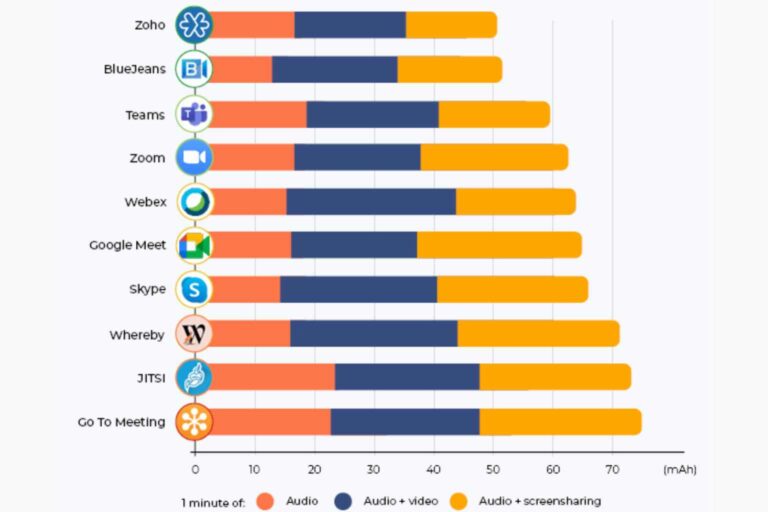
Sustainable Video Conferencing: Introduction
Welcome to this week’s sustainable business tip at Play It Green where today, we’re focusing on a topic that’s incredibly relevant in our increasingly digital world: sustainable video conferencing. As we all know, the shift to online meetings has been significant, but how often do we consider its environmental footprint?
Sustainable video conferencing is about more than just convenience; it’s about connecting people in a way that also honours our commitment to the planet. Let’s dive into the evolution of video conferencing, understand its environmental impacts, explore sustainable alternatives, and find out how we can all make our virtual meetings greener.
Sustainable Video Conferencing: A History
Video conferencing, a technology that seems so integral to our daily lives now, has a rich history dating back over half a century. The first public demonstration of video calling was in 1964 with AT&T’s Picturephone at the New York World’s Fair.
However, due to high costs and limited technology, it remained a novelty. It wasn’t until the 1990s, with the advent of the internet, that video conferencing began to take a form recognisable today.
This era saw the integration of video technology into computers, although still plagued by slow speeds and low-quality images.The early 2000s marked a turning point with the advent of broadband internet, paving the way for smoother, higher-quality video calls.
Software like Skype, launched in 2003, revolutionised personal communication, while corporate solutions like WebEx catered to businesses. The last decade, especially the 2020s, witnessed an unprecedented boom in video conferencing. This is mainly due to the global shift towards remote work.

Platforms like Zoom, Microsoft Teams, and Google Meet became household names, transforming how businesses operate, driving international collaboration, and redefining the concept of a workplace.
Video Conferencing: Environmental Impact
The environmental impact of video conferencing, particularly during the COVID-19 pandemic, has become a focal point of study. A significant surge in internet traffic, including a 20% increase since March 2020, has substantial environmental footprints.
For instance, the carbon, water, and land footprints associated with each gigabyte of data used in platforms like YouTube, Zoom, and others are considerable. Data centres, crucial for these services, account for about 1% of global energy demand and approximately 3.7% of global greenhouse gas emissions.
Streaming a high-quality video can emit 441 g CO2e per hour. If millions of users switch to standard definition, the carbon savings are equivalent to eliminating millions of tons of coal consumption. The impact varies by country, with the U.S. having a carbon footprint 9% higher than the world median due to its energy sources. The materiality and energy consumption of the internet, once overlooked, are now recognised as significant environmental concerns.

Even activities like turning off cameras or reducing streaming quality can reduce this footprint. These insights underscore the importance of understanding and mitigating the environmental costs of our increasingly digital lifestyles.
Sustainable Video Conferencing: Some Help
Identifying the most sustainable platform for video conferencing can be challenging, but according to Forbes, Zoom stands out for its efforts in sustainability (for audio and video). Zoom’s commitment to reducing its carbon footprint includes optimising data routing for energy efficiency and investing in renewable energy projects.
To enhance sustainability in video conferencing, consider actions like reducing streaming quality, which can significantly lower the carbon footprint of calls. Turning off the camera when not necessary and minimising the use of virtual backgrounds also helps in reducing data usage, thereby lessening the environmental impact. Moreover, scheduling shorter meetings and combining multiple discussions into one session can contribute to less overall energy consumption.
In the realm of sustainable video conferencing solutions, several companies are emerging as frontrunners. Whereby, in collaboration with Brynk, has made notable strides by planting trees for every three video calls, creating a tangible environmental impact.

Following them, Zoho emphasises eco-friendly practices, encouraging users to limit data usage and adopt energy-efficient habits. Finally, Lifesize provides cloud-based, energy-efficient technology, supporting a range of communication channels including video. Unfortunately, Bluejeans will be shut down by their operator, Verizon in the second quarter of 2024.
Wrap Up
Sustainable video conferencing is an achievable goal that balances the benefits of digital connectivity with environmental responsibility. By understanding its history, acknowledging its ecological impact, and adopting sustainable practices, businesses can lead the way in reducing their carbon footprint.
This approach goes beyond mere compliance with green standards; it reflects a commitment to a sustainable future where technology and environmental stewardship go hand in hand. It also gives businesses something great to talk about when engaging with prospects and clients. Let’s embrace these changes, making every virtual connection a step towards a greener, more connected world.
Play It Green: Empowering Your Sustainable Journey
Ready to take your commitment to sustainability to the next level? Play It Green stands as your partner in creating positive environmental change. From educational resources on sustainable practices and signposting to sustainable services to initiatives like tree planting and social giving, Play It Green offers a holistic approach to environmental stewardship. Join us in the journey toward sustainability—embrace eco-conscious practices and be a force for positive change in our world. All whilst staying relevant, meeting legislation and aligning with the values of today’s consumers and employees.







